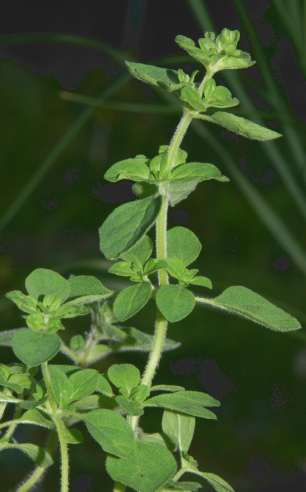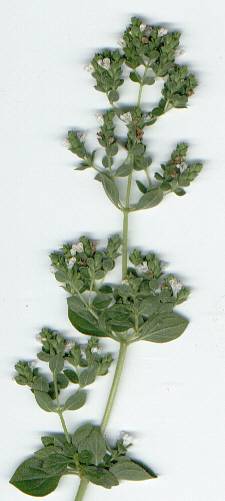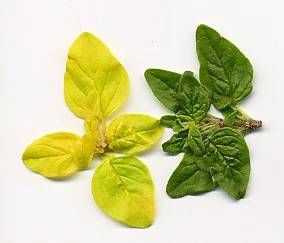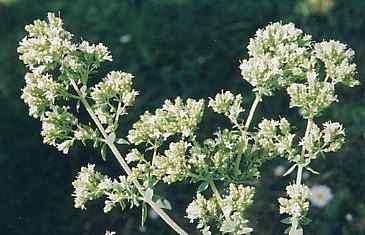
|
| Greek oregano |

|
| Oregano (flowering plant). |
The dish most associated with oregano is pizza, a kind of open pie: Bread dough topped with tasty stuff and baked. Bread of this kind was probably eaten in Southern Italy since centuries; according to the legend, pizza came into existence in 1889, when King Umberto and his wife Margherita sojourned in Napoli (Naples). Pizza, at this time not more than white bread flavoured with tomato paste, was then a popular food for the poor masses. To honour the Queen, a local baker devised a richer kind of pizza: In addition to the red tomato paste, white mozzarella cheese and green basil leaves were employed, thus reflecting the colours of the Italian flag. This invention became known as pizza Margherita and spread all over Italy and, with some delay, over the rest of the world.
Today’s pizze rely more on oregano than on basil, and use a multitude of further ingredients: Ham, sausage, fish, shellfish, mushrooms, artichokes, onion, garlic, olives, capers, rocket, anchovies and more make pizza a sophisticated delicacy, although it had once been the poor man’s sandwich.
Oregano can effectively combined with pickled olives and capers or lovage leaves; other than most Italian herbs, oregano harmonizes even with hot and spicy food, as is popular in Southern Italy. The cuisines of other Mediterranean countries make less use of it, but it is of some importance for Spanish and French cooking.
In Greece, oregano is one of the more popular herbs and usually employed in the dried state.
Like in Italy, it is valued together with the acidic flavours of pickled olives
and feta cheese [φέτα],
for example in the so-called Greek salad
(choriatiki salata [χωριάτικη σαλάτα]).
Moreover, oregano flavour grilled meats; it is used for the vertical rotating
spit roast meat gyros [γύρος],
and also for its Turkish counterpart, döner; also, the
charcoal-roasted skewered lamb pieces souvlaki [σουβλάκι]
are sprinkled with oregano.
Outside the Mediterranean region, oregano is, rather surprisingly, little in
use, except among Italian immigrants. The very similar, but stronger, taste of
Mexican oregano (see above) is popular not only in its native country
México, but also in the south of the US, where it is frequently used to
flavour chili con carne (meat stewed with chiles and sometimes
beans) or other México-inspired dishes. For this purpose, it is mostly
combined with several varieties of chiles and
paprika, dried garlic
or onion and cumin.








